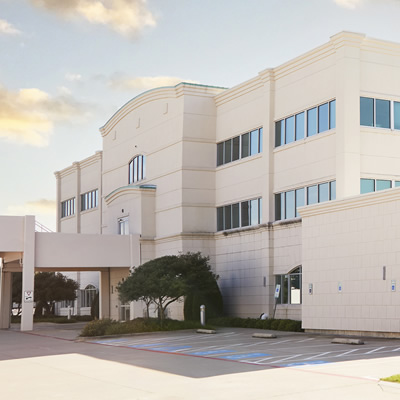What is breast cancer?
Breast cancer starts when cells in your breast grow abnormally. These cells can multiply and spread to other tissues. After skin cancer, breast cancer is the most common cancer in women today. In fact, about one in eight women will be diagnosed with breast cancer in their lifetime. While uncommon, men can get breast cancer too. Men make up less than 1% of all cases.
Whether you want to know your risk or you’re navigating a breast cancer diagnosis, you have many resources for prevention, detection, treatment and recovery. You have access to complete services from several areas of care across the Baylor Scott & White system—all dedicated to beating breast cancer.
Types of breast cancer
There are many different types of breast cancer, and the type of breast cancer you have depends on various factors, including where it begins, whether it has spread and other characteristics.
Typically, breast cancer begins in the lobules, which are the glands in your breast that produce milk, or in the milk ducts. In rare cases, you can develop cancer in other areas, such as the nipple.
Cancers are also classified based on whether they have spread to other tissues—invasive cancers—or remained in the area where they started—noninvasive cancers. Finally, doctors classify cancers by whether they have certain receptors that can attract or bind to hormones that drive cancer growth. Your cancer may be:
- Estrogen-receptor (ER) positive
- Progesterone-receptor (PR) positive
- Hormone (HR) positive, meaning they have estrogen and progesterone receptors
- Human epidermal growth factor type 2 (HER2) positive, meaning they have the HER2 protein which, like hormones, can promote cancer growth
-
Angiosarcoma
Breast angiosarcoma is a rare type of cancer that often occurs in women who receive radiation to the chest. This kind of breast cancer develops in the walls of blood vessels or the vessels of the lymphatic system.
-
Ductal carcinoma in situ (DCIS)
DCIS is a common and almost always treatable form of breast cancer. Sometimes called stage 0 breast cancer, it develops in the milk ducts but remains “in situ,” which is another term for noninvasive. However, DCIS can become invasive if not treated early.
-
Inflammatory breast cancer (IBC)
Rare in the United States, IBC is a type of invasive ductal carcinoma that occurs more often in Black women and women under 40. It grows and spreads more quickly than other breast cancer types and, in about 30% of cases, has spread outside the breast. It often causes a rash, unusual texture, swelling or redness in the breast.
-
Invasive ductal carcinoma (IDC)
IDC is the most common type of breast cancer, occurring in about 80% of women diagnosed with breast cancer. It begins in the milk ducts and then spreads to other areas of the breast.
-
Invasive lobular carcinoma (ILC)
ILC is the second most common type of breast cancer, occurring in about 10% of cases. It begins in the lobules, or glands that produce milk, and spreads to other parts of the body. ILC may occur in both breasts.
-
Male breast cancer
Male breast cancer is a rare condition that occurs when cancerous cells form in the breast tissue of men. Though commonly associated with women, anyone with breast tissue can develop breast cancer. It is most common in older men but can happen at any age. Treatment often involves surgery to remove the breast tissue and other options like chemotherapy or radiation may be recommended.
-
Paget disease
In Paget disease, cancer cells form around or in your nipple, or the skin around it (the areola). It often causes redness, scales and unusual nipple discharge. A rare form of breast cancer, Paget disease often develops along with another type of breast cancer, such as DCIS or IDC.
-
Triple negative breast cancer (TNBC)
A type of invasive breast cancer, TNBC gets its name from the fact that it is negative for the three protein receptors that cause breast cancer to grow—estrogen, progesterone and HER2. It is aggressive and difficult to treat. TNBC more commonly occurs in younger women, Black women and women with mutations in the BRCA1 gene.
Symptoms of breast cancer
One of the main signs of breast cancer is a lump, which can appear in your breast or underarm. However, lumps don’t always occur with every type of breast cancer. When they appear or are large enough to be felt, cancer may be advanced or fast-growing.
Early-stage breast cancer does not always cause symptoms. Still, it’s important to know what to look for so you can identify changes in your breasts during monthly self-exams.
In addition to breast lumps, signs and symptoms of breast cancer include:
- A nipple that pulls or turns in
- Changes in your breast’s size or shape
- Discharge from the nipple that is not breast milk
- Pain in your breast or nipple
- Skin changes in the breast or around the nipple, such as dimpling, puckering, irritation, redness, dryness or flaking
- Swelling or thickening in the breast or armpit
When to see a doctor
See your doctor as soon as possible whenever you notice concerning signs or symptoms in your breasts. Many conditions can cause similar symptoms, and your provider can help you determine the cause and the appropriate treatment.
You can stay on top of your health with monthly breast self-exams. These let you get to know the normal texture and feel of your breasts, which can help you identify changes sooner.
What causes breast cancer?
Breast cancer is caused by breast cells that grow out of control. Medical experts do not know exactly why breast cells grow out of control in some women, but it may occur because of hormones or changes in your genes that you inherit from your parents or that develop over the course of your life. Genes control how your cells grow, divide and repair problems in DNA that can lead to cancer.
Researchers have identified many genetic changes that can increase your risk of developing breast cancer, including changes in BRCA1 and BRCA2, two genes commonly associated with the disease. However, many gene changes that cause breast cancer develop after you are born and are not well understood.
Risk factors for breast cancer
Knowing your risk for breast cancer allows you to take proactive steps to care for your breast health. Some breast cancer risk factors are within your control, and healthy changes may lower your risk. Others are not, but regular screenings can help you identify cancer early when it’s easier to treat.
-
Risk factors you can change
Research has shown that women with healthy lifestyles have lower rates of breast cancer and may lower your risk even if you have a family history of the disease.
- Alcohol intake: Alcohol produces harmful substances as it breaks down in your body, affects how you absorb vitamins and increases estrogen levels, all of which may increase breast cancer risk.
- Excess weight: Being overweight or obese may raise your breast cancer risk for many reasons. Fat tissue may produce estrogen and other hormones, obesity is linked to inflammation, and excess weight often occurs with high insulin levels, which also increases cancer risk.
- Not getting enough physical activity: Exercise helps you maintain a healthy weight, and it may lower inflammation and hormone levels that are linked to breast cancer.
- Pregnancy and breastfeeding history: Having children before age 30 and having multiple pregnancies appears to slightly reduce breast cancer risk. Breastfeeding also appears to reduce a woman’s exposure to hormones, which may help prevent breast cancer.
- Tobacco use: You can be exposed to chemicals in tobacco smoke through smoking or secondhand smoke. Increasing research has shown that these chemicals may increase breast cancer risk.
- Using certain types of birth control or hormone therapy: Hormone-based birth control methods and hormone replacement therapy for menopause often contain estrogen and progesterone, which have been found to increase breast cancer risk. Their impact on risk depends on how long you use them and other factors.
-
Risk factors you cannot change
You don’t always have control over your risk for breast cancer. Some factors that you cannot change include:
- Age: Many breast cancers develop after age 50.
- Certain gene mutations: Mutations, or changes, in your genes can cause cancer cells to grow. Many gene mutations have been linked to breast cancer, but the most common are changes to the BRAC1 and BRAC2 genes.
- Dense breast tissue: Women with dense breasts appear to have an increased breast cancer risk, although the reasons are unknown. Dense breasts can also make it harder to see breast cancer or abnormalities on a mammogram.
- Ethnicity: In general, non-Hispanic white and Black women have a higher breast cancer risk. Black women are at increased risk of developing triple negative breast cancer and breast cancer before age 40.
- Family history: Most breast cancers occur in women who do not have a family history, but having one or more first-degree relatives—mother, sister, daughter, father or brother—with breast cancer increases your risk. This could be due to genetic mutations you inherit.
- History of certain medical treatments: Cancer treatment with radiation therapy to the chest can increase your risk, as can a medication called diethylstilbestrol (DES) used to prevent miscarriage until the early 1970s. If you took DES or your mother did, you may have a higher breast cancer risk.
- Personal health history: Having breast cancer in one breast, especially at a younger age, may increase your risk of developing it in the other breast. Having certain noncancerous breast conditions may also increase your risk.
- Sex: Women and men can get breast cancer, but being female or assigned female at birth puts you at greater risk.
- Your menstrual history: You may be at higher risk if you had your first period before age 12 or started menopause after 55, due to a longer lifetime exposure to hormones.
Diagnosing breast cancer
Doctors typically diagnose breast cancer using imaging tests. If you have concerning symptoms, an imaging test may help determine what could be causing the symptoms. Your provider may also order another imaging test if a screening mammogram detects a suspicious spot or abnormality.
Based on the results of the imaging test, you may need a procedure called a biopsy to confirm a diagnosis.
Medical history and exam
Your OBGYN or women’s health provider may perform a clinical breast exam during your annual well-woman exam.
Clinical breast exams are typically not used to diagnose breast cancer. If your provider suspects something abnormal, they may recommend a diagnostic mammogram, a breast MRI or a breast ultrasound.
Imaging and other tests
Imaging tests give your provider a detailed view of your breast tissue and, potentially, surrounding areas. Some imaging tests are used to screen for breast cancer, while others can be used to investigate a potential diagnosis.
- Screening mammogram: Screening mammograms are for women who have no signs of breast cancer. A mammogram often identifies early signs of breast cancer before you develop symptoms or feel a lump.
- Diagnostic mammogram: You may have a diagnostic mammogram if you have signs or symptoms of breast cancer or if your screening mammogram detected an abnormality.
- Breast ultrasound: Ultrasound uses sound waves to provide an image of a certain area of your breast. Your provider may order a breast ultrasound as an additional screening tool, along with a mammogram, especially if you have dense breasts. A breast ultrasound may also be used to investigate a lump or abnormality picked up on a screening mammogram.
- Breast MRI: MRI uses magnets and radio waves to produce images of your breasts. Your provider may order a breast MRI as an additional screening if you are at high risk for breast cancer or to investigate a suspicious area identified on a screening mammogram or in a clinical exam.
- Genetic testing: You may also benefit from genetic testing to determine if you have genetic mutations that increase your risk for breast cancer. Your provider can discuss whether they are appropriate for you.
Breast biopsy
If an imaging test finds something concerning, your provider may order a breast biopsy. These tests use imaging technology, such as an X-ray, ultrasound or MRI scan, to guide a needle into the breast. Then, a sample of tissue is taken and sent to a lab to be analyzed for the presence of cancerous cells.
Breast cancer stages
Several tests are used to measure a cancer’s stage. Staging depends on the size and grade of a tumor, how far it has spread and whether it has protein receptors (also called biomarkers). The stage of your cancer will help determine your treatment.
In general, breast cancer is staged from 0 to IV. Stage 0 cancer is the lowest stage. These cancers are noninvasive and often labeled as “carcinoma in situ.” Stage IV cancers are the most advanced form of the condition and are often referred to as metastatic breast cancer, which means it has spread outside the breast to the bones, lungs, liver or brain.
Treatment for breast cancer
Breast cancer treatment could include surgery, radiation therapy or medications. Your breast cancer care team will work with you to develop a treatment plan based on the stage and type of your condition. Your team can also help you weigh the pros and cons of each treatment, so you can choose the options that work best for your long-term health and life goals and understand what type of follow-up care you may need after treatment.
Surgery
Most women have some type of surgery to treat breast cancer. The type of surgery you need will depend on your diagnosis.
- Lumpectomy: A lumpectomy, also called breast-conserving surgery, allows your breast surgeon to remove a tumor and, in some cases, surrounding tissue and lymph nodes but leave most of the breast intact. You may have radiation therapy or another treatment after a lumpectomy.
- Mastectomy: During a mastectomy, your breast surgeon removes one or both breasts. In some cases, nearby lymph nodes are also removed. Nipple- and skin-sparing mastectomies leave the nipple or skin behind so you can have breast reconstruction surgery.
- Breast reconstruction: Breast reconstruction may be an option after a mastectomy or lumpectomy. Discussing your options for reconstruction with your breast surgeon before having surgery to treat the cancer helps you decide which type of surgery you may want or need.
Chemotherapy
Chemotherapy uses strong medicines to treat cancer, often combining several types. Most are given through a vein, though some are in pill form. For breast cancer, chemotherapy is commonly used after surgery to eliminate any remaining cancer cells and lower the risk of recurrence. Sometimes, it's given before surgery to shrink the cancer and make it easier to remove or control cancer in the lymph nodes. This approach can reduce the need for extensive surgery. In advanced cancer, chemotherapy can help manage symptoms like pain.
Hormone therapy
Hormone therapy treats certain breast cancers by blocking the hormones estrogen and progesterone, which fuel the cancer's growth. It's used for cancers that are estrogen or progesterone receptor-positive. By blocking these hormones, the cancer cells can shrink or die. Hormone therapy is often given after surgery to reduce the risk of the cancer returning, and it can also help control cancer that has spread. Treatments include medicines that block hormones, prevent estrogen production after menopause, or stop the ovaries from making hormones.
Immunotherapy
Immunotherapy uses medicine to help the immune system fight cancer by making it easier to find and destroy cancer cells. It may be an option for treating triple-negative breast cancer, a type that lacks receptors for estrogen, progesterone and HER2.
Targeted therapy
Targeted therapy uses medicines that attack specific chemicals in cancer cells, causing them to die. For breast cancer, the most common targeted therapy focuses on the HER2 protein, which some cancer cells produce in excess. These treatments target cancer cells without harming healthy ones. Other targeted therapies exist and can be tested for effectiveness. Targeted therapy can be used before surgery to shrink the cancer, after surgery to reduce recurrence, or when the cancer has spread to other parts of the body.
Radiation therapy
Radiation therapy uses high-energy rays to kill cancer cells. For women with early-stage cancers, radiation therapy occurs after surgery to destroy any cancer cells left behind after the procedure. With later-stage cancers, radiation therapy may be the only treatment, or it may be used to treat cancer that has spread to other parts of the body.
There are two types used for breast cancer:
- External beam radiation therapy (EBRT): EBRT delivers high-energy beams from a source outside your body. It’s the most common type of radiation therapy used for breast cancer.
- Internal radiation therapy: Also called brachytherapy, this treatment uses an implant placed in the body to deliver a consistent dose of radiation.
How to prevent breast cancer
You can’t always prevent breast cancer, especially if you have genetic mutations or other risk factors beyond your control. However, you can take steps to protect yourself from breast cancers associated with lifestyle behaviors.
- Breastfeed if you plan to have children.
- Eat a healthy diet. Some evidence suggests that getting more fiber and eating more fruits and vegetables may lower your risk. A healthy diet will also help you stay at a healthy weight.
- Exercise regularly. The American Cancer Society recommends getting at least 150 to 300 minutes of moderate-intensity physical activity per week.
- Limit your alcohol intake. Research has shown that drinking even one drink a day can have an impact on breast cancer risk.
- Maintain a healthy weight. Aim for a body mass index of between 18.5 and 24.9. Your BMI is a measure of your height compared with your weight.
- Quit smoking. You’ll reduce your risk for breast and many other cancers.
Breast cancer screening
While breast cancer screenings cannot prevent cancer, they can identify it in its early stages, when you have more options for treatment.
We support recommendations that women of average risk for breast cancer begin annual screening mammograms at age 40. You may need earlier or more frequent screenings if you have factors that put you at high risk, such as a family history, a history of breast cancer or known genetic mutations.
Our high-risk breast screening program provides tools to help you understand your risk and connect with care that fits your needs.
Why Baylor Scott & White for breast cancer
When you choose us for your breast cancer care, you get access to multiple specialists, support services, clinical trials, patient navigators and more across Texas. Our cancer care team not only treats your breast cancer but also cares for you as a person.
From prevention to life after cancer, we guide you through your entire journey, and often, you don’t have to travel far. With the largest network of cancer centers in Texas, we bring advanced breast cancer treatment and years of expertise straight to you.
- Dedicated patient navigators
- A team approach to breast cancer care
- Access to breast cancer research
- Locations across North and Central Texas
- Breast cancer support groups and resources
- High-risk breast programs
- Genetic counseling
- Resource centers and boutiques
- Survivorship program
Breast cancer care near you
We help you get care at a location that fits your needs. We offer several locations for your care, including specialized breast cancer centers in North and Central Texas.

Baylor Scott & White Breast Care Specialists of Texas
1250 8th Ave Ste 650, Fort Worth, TX, 76104- Monday: 8:30 am - 4:30 pm
- Tuesday: 8:30 am - 4:30 pm
- Wednesday: 8:30 am - 4:30 pm
- Thursday: 8:30 am - 4:30 pm
- Friday: 8:00 am - 1:30 pm

Baylor Scott & White Breast Care Specialists of Texas (Satellite)
6100 Harris Pkwy Ste 260, Fort Worth, TX, 76132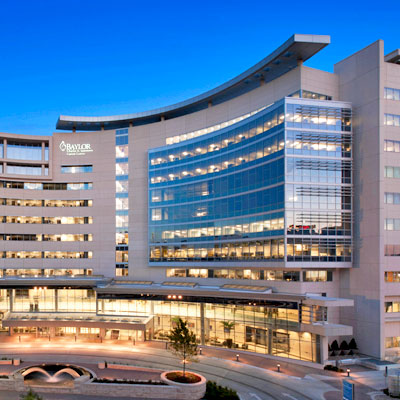
Baylor Scott & White Breast Specialists - Dallas
3410 Worth St Ste 235, Dallas, TX, 75246- Monday: 8:30 am - 5:00 pm
- Tuesday: 8:30 am - 5:00 pm
- Wednesday: 8:30 am - 5:00 pm
- Thursday: 8:30 am - 5:00 pm
- Friday: 8:30 am - 5:00 pm
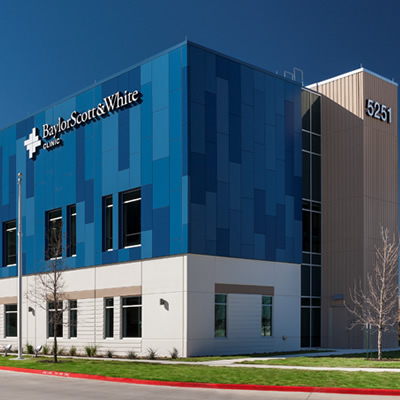
Baylor Scott & White Cancer and Infusion Center - Austin Oak Hill
5251 US 290 Ste 100, Austin, TX, 78735- Monday: 8:00 am - 5:00 pm
- Tuesday: 8:00 am - 5:00 pm
- Wednesday: 8:00 am - 5:00 pm
- Thursday: 8:00 am - 5:00 pm
- Friday: 8:00 am - 5:00 pm
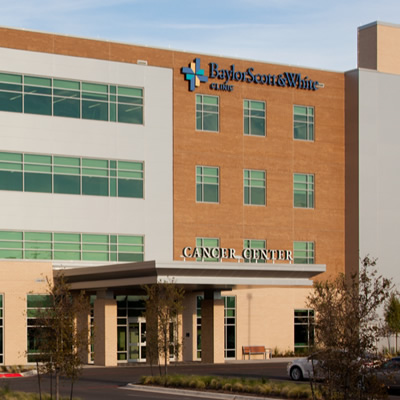
Baylor Scott & White Cancer Center - Round Rock
300A University Blvd , Round Rock, TX, 78665- Monday: 8:00 am - 5:00 pm
- Tuesday: 8:00 am - 5:00 pm
- Wednesday: 8:00 am - 5:00 pm
- Thursday: 8:00 am - 5:00 pm
- Friday: 8:00 am - 5:00 pm
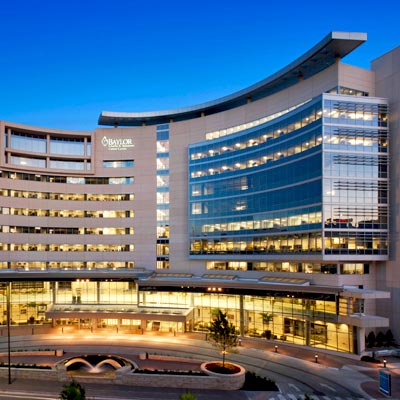
Baylor Scott & White Charles A. Sammons Cancer Center - Dallas
3410 Worth St , Dallas, TX, 75246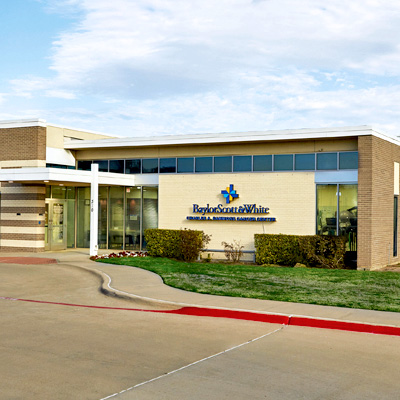
Baylor Scott & White Charles A. Sammons Cancer Center - Duncanville
310 E Hwy 67 , Duncanville, TX, 75137- Monday: 8:00 am - 5:00 pm
- Tuesday: 8:00 am - 5:00 pm
- Wednesday: 8:00 am - 5:00 pm
- Thursday: 8:00 am - 5:00 pm
- Friday: 8:00 am - 5:00 pm

Baylor Scott & White Charles A. Sammons Cancer Center - Irving
2001 N MacArthur Blvd Ste 120, Irving, TX, 75061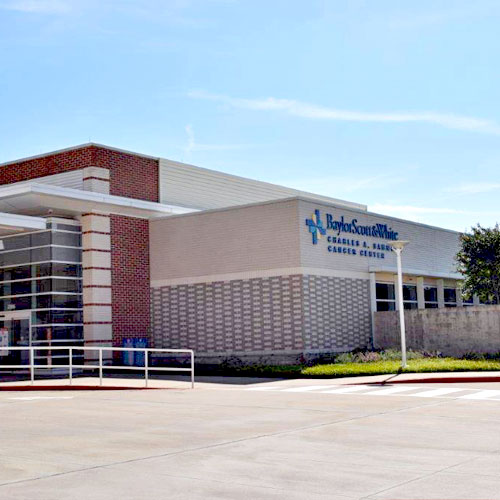
Baylor Scott & White Charles A. Sammons Cancer Center - Waxahachie
2380 N Interstate 35E , Waxahachie, TX, 75165- Monday: 7:30 am - 4:30 pm
- Tuesday: 7:30 am - 4:30 pm
- Wednesday: 7:30 am - 4:30 pm
- Thursday: 7:30 am - 4:30 pm
- Friday: 7:30 am - 4:30 pm
- Saturday: 7:30 am - 4:30 pm
- Sunday: 7:30 am - 4:30 pm
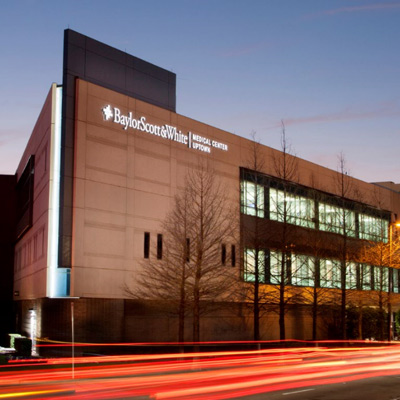
Baylor Scott & White Medical Center - Uptown
2727 E Lemmon Ave , Dallas, TX, 75204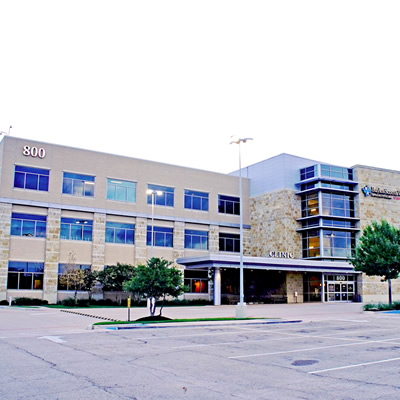
Baylor Scott & White Specialty Clinic - Marble Falls
800 W State Hwy 71 , Marble Falls, TX, 78654- Monday: 8:00 am - 5:30 pm
- Tuesday: 8:00 am - 5:30 pm
- Wednesday: 8:00 am - 5:30 pm
- Thursday: 8:00 am - 5:30 pm
- Friday: 8:00 am - 5:30 pm
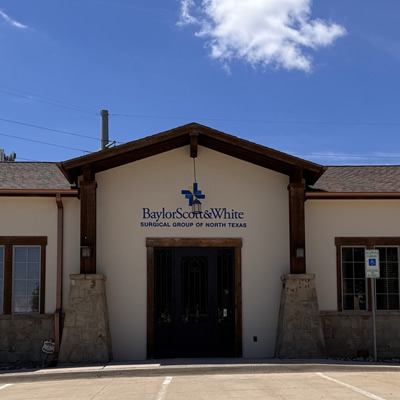
Baylor Scott & White Surgical Group of North Texas - Grapevine
1056 Texan Trl , Grapevine, TX, 76051- Monday: 8:00 am - 5:00 pm
- Tuesday: 8:00 am - 5:00 pm
- Wednesday: 8:00 am - 5:00 pm
- Thursday: 8:00 am - 5:00 pm
- Friday: 8:00 am - 4:00 pm
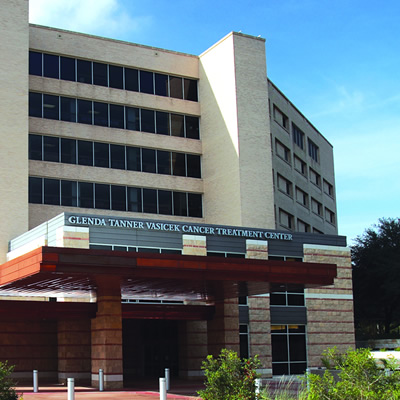
Baylor Scott & White Vasicek Cancer Treatment Center - Temple
2401 S 31st St , Temple, TX, 76508- Monday: 8:00 am - 5:00 pm
- Tuesday: 8:00 am - 5:00 pm
- Wednesday: 8:00 am - 5:00 pm
- Thursday: 8:00 am - 5:00 pm
- Friday: 8:00 am - 5:00 pm

Baylor Scott & White Women's Imaging Center - Irving (MacArthur & Hwy 183)
2001 N MacArthur Blvd Ste 250, Irving, TX, 75061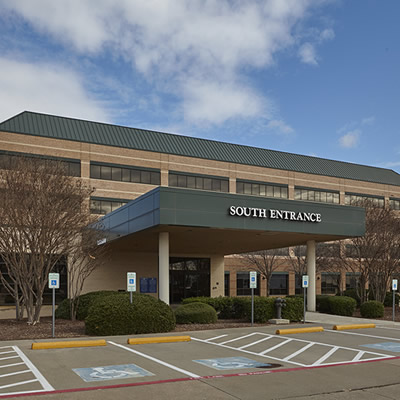
Baylor Scott & White Women's Imaging Center - Las Colinas (MacArthur & I-635)
440 W Lyndon B Johnson Fwy Plaza II, Ste 120A, Irving, TX, 75063
Baylor Scott & White Women's Imaging Center - McKinney
5236 W University Dr Ste 2500, McKinney, TX, 75071- Monday: 8:00 am - 4:30 pm
- Tuesday: 8:00 am - 4:30 pm
- Wednesday: 8:00 am - 4:30 pm
- Thursday: 8:00 am - 4:30 pm
- Friday: 8:00 am - 4:30 pm

Baylor Scott & White Women's Imaging Center - Plano
4716 Alliance Blvd Pavilion II, Ste 100, Plano, TX, 75093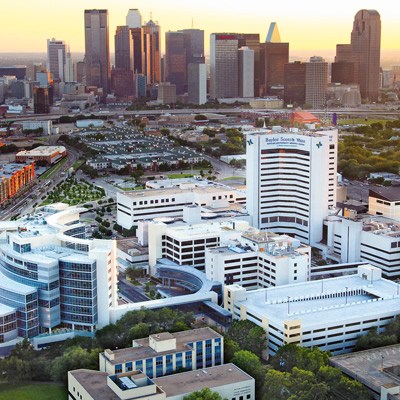
Baylor University Medical Center, part of Baylor Scott & White Health
3500 Gaston Ave , Dallas, TX, 75246